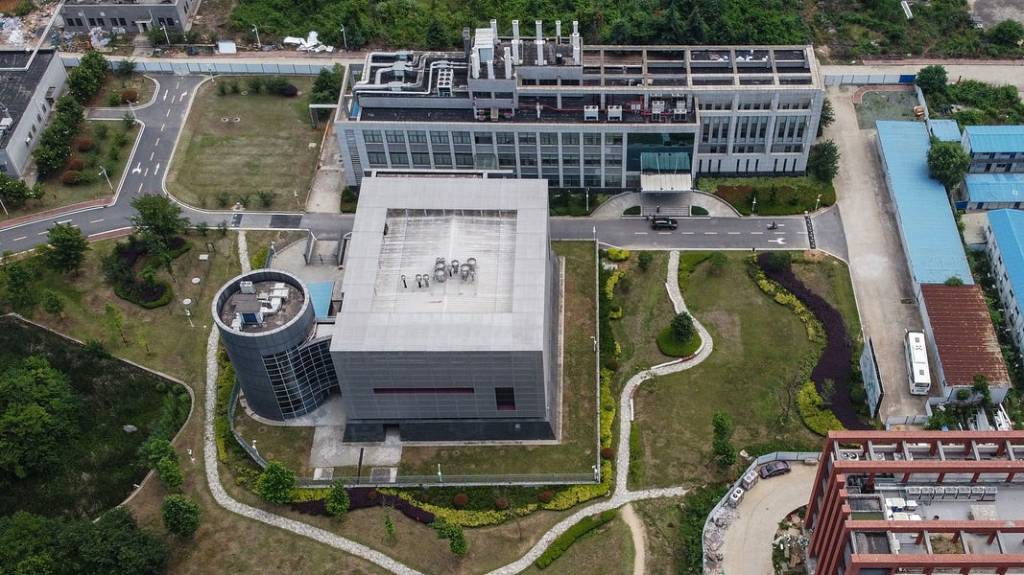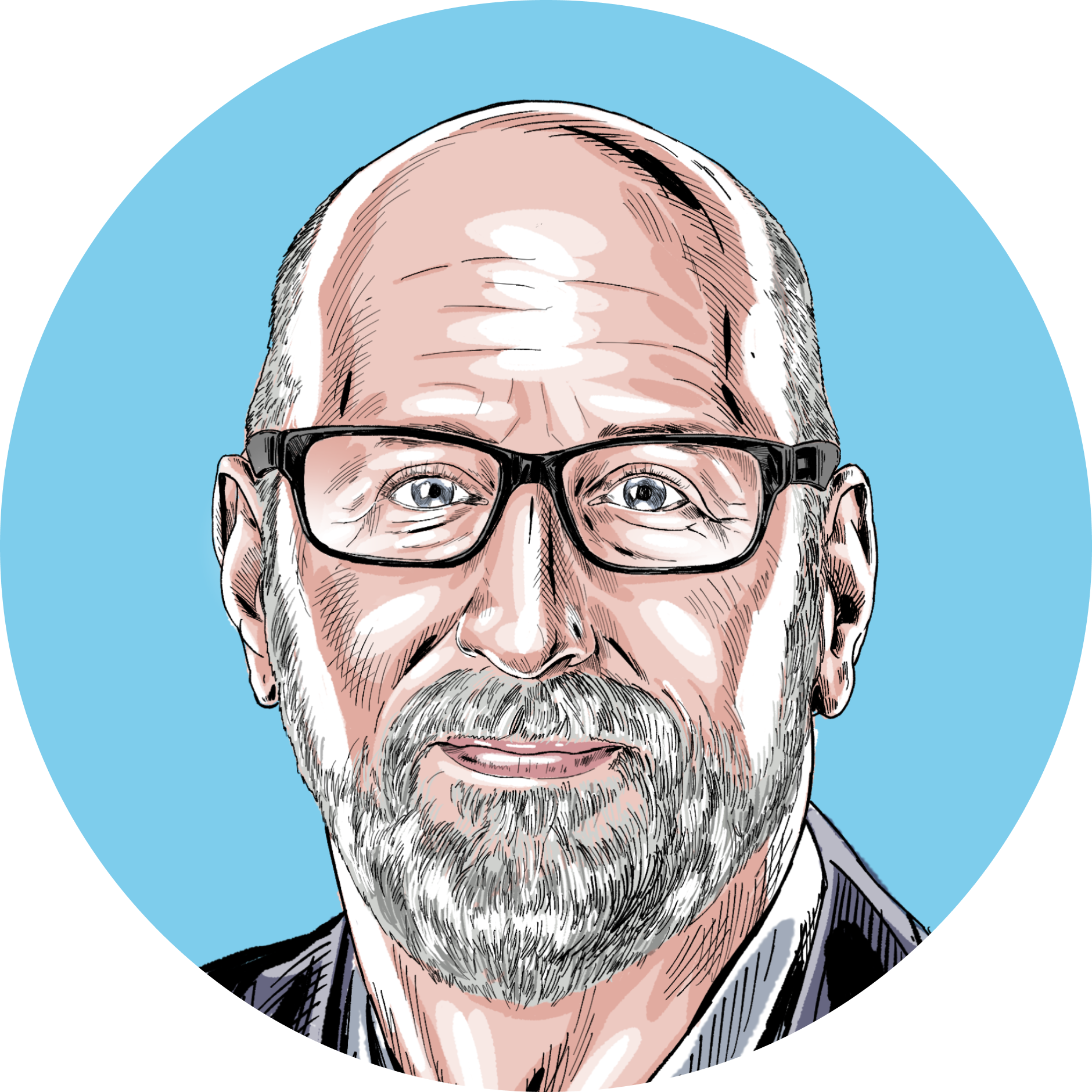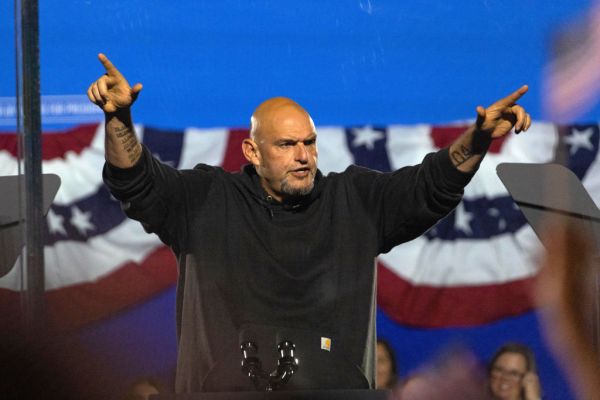In the United States, the COVID pandemic is mercifully nearing its end. Case counts are down, hospitalizations are down, and so are deaths. It’s too soon to say the pandemic is “over” (after all, the virus killed 615 Americans yesterday alone), but the combination of vaccines and natural immunity is dramatically limiting the spread of the disease. In fact, earlier today Axios announced that it will no longer print its weekly COVID map:
At the same time, we’re in the midst of a massive news dump that’s triggering a re-evaluation of the American response to the virus. Remember the lab-leak theory that was labeled a conspiracy theory last year? It suddenly has new legs, and Vanity Fair has published a truly extraordinary blow-by-blow account of the effort inside and outside the government to take a close, fair look at the possibility that COVID escaped from a Chinese lab.
Do you want to dissect Dr. Anthony Fauci’s response to the Coronavirus? You can go to BuzzFeed and read 3,234 pages of emails to and from Fauci, including emails that outline his evolving views of the effectiveness of masking.
As the pandemic passes, I’m interested in discerning what we’ve learned about American elites—the people who shape and influence American public opinion at a grand scale. What’s the after-action review of those who spoke into American life at a time of deep uncertainty, profound anger, and very real fear?
At the outset of the pandemic, I wrote two pieces that reflected my deep concerns. First, I was concerned that COVID was hitting the United States at exactly the wrong time in our national life. Because so few of us knew anything about epidemiology (much less about a novel coronavirus), our response required a high degree of trust in a low-trust time.
We were going to have to rely on experts (and each other) to navigate through the crisis at just the moment when our faith in experts (and each other) was at a dangerous low.
Second—compounding the challenge—many of our early responses and evaluations were going to be misguided. When highly-complex events unfold in real time, reality is often shrouded in something like a “fog of war.” Some early judgments would be wrong. Some would be right, and every single incorrect judgment was going to exacerbate existing distrust.
As we’re nearing the final results, the outcome has been objectively bad. In days, the death toll will pass 600,000, a death toll orders of magnitude worse than many early assessments. Our death has been far worse than that of most advanced economies. And we’re ending the pandemic with the country more divided and angry than when the pandemic began.
In short, our shared challenge did not unite us. Yes, we can and should celebrate the success of Operation Warp Speed, but in the months before that success, a divided nation struggled through a wave of sickness and death.
What can we learn? I suggest there are three important takeaways from the elite failures of the last year:
-
A “noble” lie is still a lie, and “noble” censorship is still perilous;
-
Distrust leaves no room for changed minds; and
-
The peculiar culture of Twitter makes everything worse.
A noble lie is still a lie, and noble censorship is still perilous. Regardless of whether liars and censors think they have virtuous motivations, it’s hard to think of a governmental or media decision that demolishes trust more completely than a decision to either lie outright or squelch the search for truth because leaders and elites believe the public won’t respond well to reality or to public debate.
Take the lab-leak theory, for example. As Vanity Fair and others note, fear of xenophobia created an immediate rush to falsely label as a “conspiracy” even the most informed and reasonable discussion about the possibility that COVID escaped from a Chinese lab.
But that’s hardly the only version of the “noble lie” that dominated early COVID conversations. More consequential to American lives was President Trump’s decision to repeatedly downplay the severity of COVID even after he knew it was more deadly than the flu. He claimed a virtuous motive for his lies, that he didn’t want to drive the world into a “frenzy” and didn’t want to “instill panic.” Yet millions of Americans (including right-wing elites) either believed or professed to believe his lies. A narrative locked in on parts of the right that COVID wasn’t dangerous. That narrative cost lives.
Early admonitions against masking also contained elements of the “noble lie.” Fears of PPE shortages helped drive mixed messaging, though much of the changed mask guidance rested on changed understandings about how the virus spread. (More on that below.)
The noble lie isn’t just destructive—it’s fruitless. We live in an information age where it is incredibly difficult to suppress truth for a sustained period of time. Even when social media was (wrongly) censoring lab-leak posts as “misinformation,” the conversation couldn’t be silenced. It continued, a constant hum in the background, until it finally became clear that the decisive “debunking” early in the pandemic suffered from its own speculations and evidentiary problems. And now the lab-leak hypothesis is front and center in the American conversation.
Trump’s lies were even more immediately exposed, and he faced consequences for his mendacity. Handle COVID differently, and he’s likely still president. Handling it dishonestly harmed some of his most devoted supporters and helped hand him his most stinging defeat.
Distrust leaves no room for changed minds. What’s another consequence of dishonesty? It makes even reasonable Americans distrustful of good-faith changes in elite understanding and public messaging. Let’s take masking guidance, for example. Under the best of circumstances, shifting messaging on masks would create confusion. It takes time to educate 330 million people about anything, including simple things like whether or not masking is prudent. But if you change your messaging in a time of high distrust—and when there exists an entire industry that profits from distrust—then prepare for chaos and anger.
There were parts of the public who simply didn’t trust that public health authorities changed their mask guidance because they learned more about the virus. Instead, stoked on by prominent right-wing figures, they viewed masking orders as a masochistic exercise of raw government control. In fact, the entire mask debate ended up hopelessly mired in confusion. By late spring—as the vaccination campaign gained momentum—masks were almost as much a partisan marker as they were an element of personal protection.
Here it’s worth pausing to describe once again the difference between earned distrust and manufactured distrust. America is in an epidemic of both. When an institution lies—even for allegedly noble reasons—it earns its distrust. At the same time, partisan interests will often exaggerate errors or falsely ascribe malicious motives to innocent mistakes in part because there is an insatiable (and lucrative) market for any news (real or fake) that casts opponents in the worst possible light.
Earned distrust heightens public suspicion. Manufactured distrust renders any reversal of opinion, no matter how well-considered, extraordinarily risky, both personally and professionally. A change of mind is deemed proof of a lie to a public that is primed to believe that they’re being lied to. The result is what we witnessed—a partisan environment where each side trusted its experts and its experts only, giving grace to its allies and heaping scorn on their enemies.
Yet peering through the fog of war requires flexibility. When the facts become more clear, conclusions should change, and it shouldn’t be deemed a discrediting failure when early assessments prove imperfect. Instead, we faced the pandemic with exactly the wrong culture in place, a culture whose defects are amplified and broadcast through a specific social media platform that helps create a hive mind.
Twitter makes everything worse. It’s important here to be precise. I don’t think all social media is the same. Different platforms have their own consumer cultures and contribute to their own social dysfunctions.
At the risk of dramatic oversimplification, Instagram is more prone to make you insecure about your appearance, Facebook is most likely to make you angry at your uncle, and Twitter is the place where the elite often discredits itself. (Disclosure: The Dispatch is a Facebook fact check partner.) As Jonathan Chait recently put it, “Twitter is the milieu in which the opinions of elite reporters take shape. And very often it is a petri dish of tribalism and confirmation bias.”
One of the supremely strange aspects of Twitter is that virtually any person who has a meaningful public presence is expected to form and express an opinion about virtually every event of consequence, and to do so with extreme speed. Remain silent, and you’re “complicit” or, even worse, a “coward.” In fact, there’s a double incentive to speak out. Silence doesn’t build an audience, and silence can lead to unwelcome, nasty critique.
So people from all walks of life and with varying degrees of education and expertise are suddenly expected to have an opinion (depending on the controversy) on the laws of war, the First Amendment, inflation, deficits, entitlements, due process, or—in this case—the origin, severity, and transmissibility of a completely new virus.
Since only the delusional believe they’re experts in everything, what’s a person under pressure to “speak now” to do? They defer to and amplify allied expertise. That’s why if you’re first-to-market with an “explainer” or a “statement” on a topic within your own wheelhouse, you can not only generate immense traffic, you can set the terms of elite debate on the elite’s chosen platform for debate.
For example, the Vanity Fair lab-leak article demonstrates the power of a single statement in real time:
On February 19, 2020, The Lancet, among the most respected and influential medical journals in the world, published a statement that roundly rejected the lab-leak hypothesis, effectively casting it as a xenophobic cousin to climate change denialism and anti-vaxxism. Signed by 27 scientists, the statement expressed “solidarity with all scientists and health professionals in China” and asserted: “We stand together to strongly condemn conspiracy theories suggesting that COVID-19 does not have a natural origin.”
The Lancet statement effectively ended the debate over COVID-19’s origins before it began. To Gilles Demaneuf, following along from the sidelines, it was as if it had been “nailed to the church doors,” establishing the natural origin theory as orthodoxy. “Everyone had to follow it. Everyone was intimidated. That set the tone.”
Back in February 2020, you could probably count the number of blue-checkmark journalists and other public figures who had working knowledge of epidemiology, Chinese bats viruses, and Chinese virus labs on the fingers of one hand. Yet it was not only increasingly clear that we were facing the onset of a world-historic pandemic, it was also deemed imperative to have an opinion about the virus.
The Lancet statement checked all the necessary boxes for many, many progressive members of the media. An authoritative source? Check. Stands against xenophobia? Check. Counters possible Trump propaganda? Check. Never mind that it was very early in the pandemic. Never mind that there was no real reason to trust the Chinese Communist Party. The Lancet statement gave members of the media something to say, loudly and repeatedly, that conveniently enough also fit neatly within a desired narrative.
The culture of Twitter pushes elites to speak before they should speak. But it also punishes you harshly when you’re wrong. (Remember, entire industries manufacture distrust.) In a more sane world, the terrible public shaming that accompanies public mistakes should make one slower to speak. Instead it tends to make public figures slower to admit error, slower to revisit issues wrongly deemed decided.
The pattern is clear: Speak quickly, double down, and hope your partisan alliances can help you weather the storm if you’re ever forced to change course. And so our cultural dysfunctions came together in one place, at one time, on a platform that has an outsize influence on the decision-making (and public reputation) of virtually every significant leader in the United States.
Thus, while there are notable and heroic exceptions to the rule, one of the sad realities of the COVID crisis is that the American political and cultural elite could not transcend the dysfunctions of our time and place. It did not rise to the occasion. Instead, all too often it walked into a once-in-a-century crisis and made it worse.
One more thing …
In a podcast episode that illustrates why Advisory Opinions is the true flagship podcast of The Dispatch, Sarah and I spend minute after delightful minute breaking down the precise definition of the word “so.” Very good times. Listen and enjoy:

One last thing …
My Grizzlies went down in defeat Wednesday night to the top-seeded Utah Jazz. There’s no shame in the loss. They fought hard. The future is bright, and Ja Morant is a budding superstar. So, in tribute to him and to the coolest team in the NBA, I’ll close with this—a 360 degree dunk in the playoffs.







Please note that we at The Dispatch hold ourselves, our work, and our commenters to a higher standard than other places on the internet. We welcome comments that foster genuine debate or discussion—including comments critical of us or our work—but responses that include ad hominem attacks on fellow Dispatch members or are intended to stoke fear and anger may be moderated.
You are currently using a limited time guest pass and do not have access to commenting. Consider subscribing to join the conversation.
With your membership, you only have the ability to comment on The Morning Dispatch articles. Consider upgrading to join the conversation everywhere.